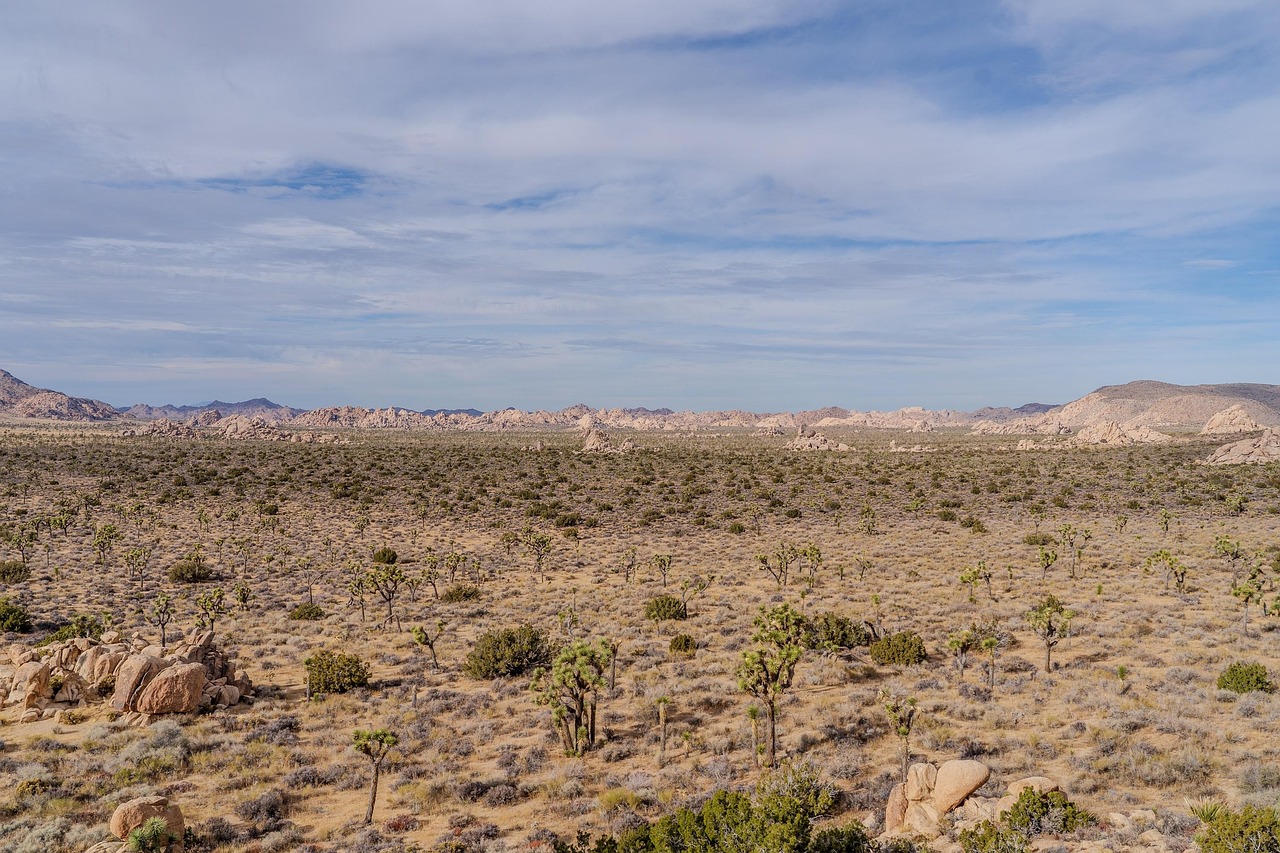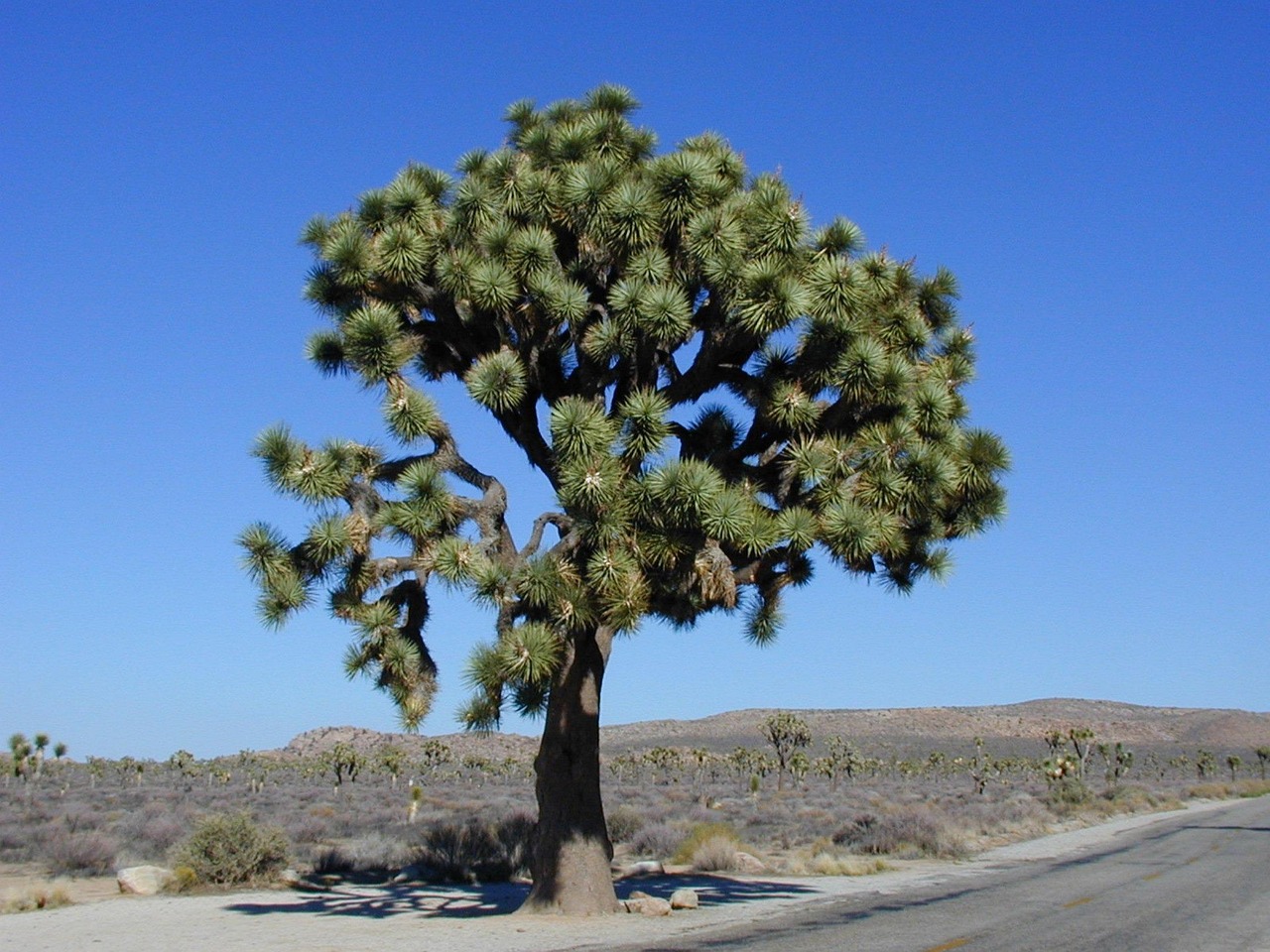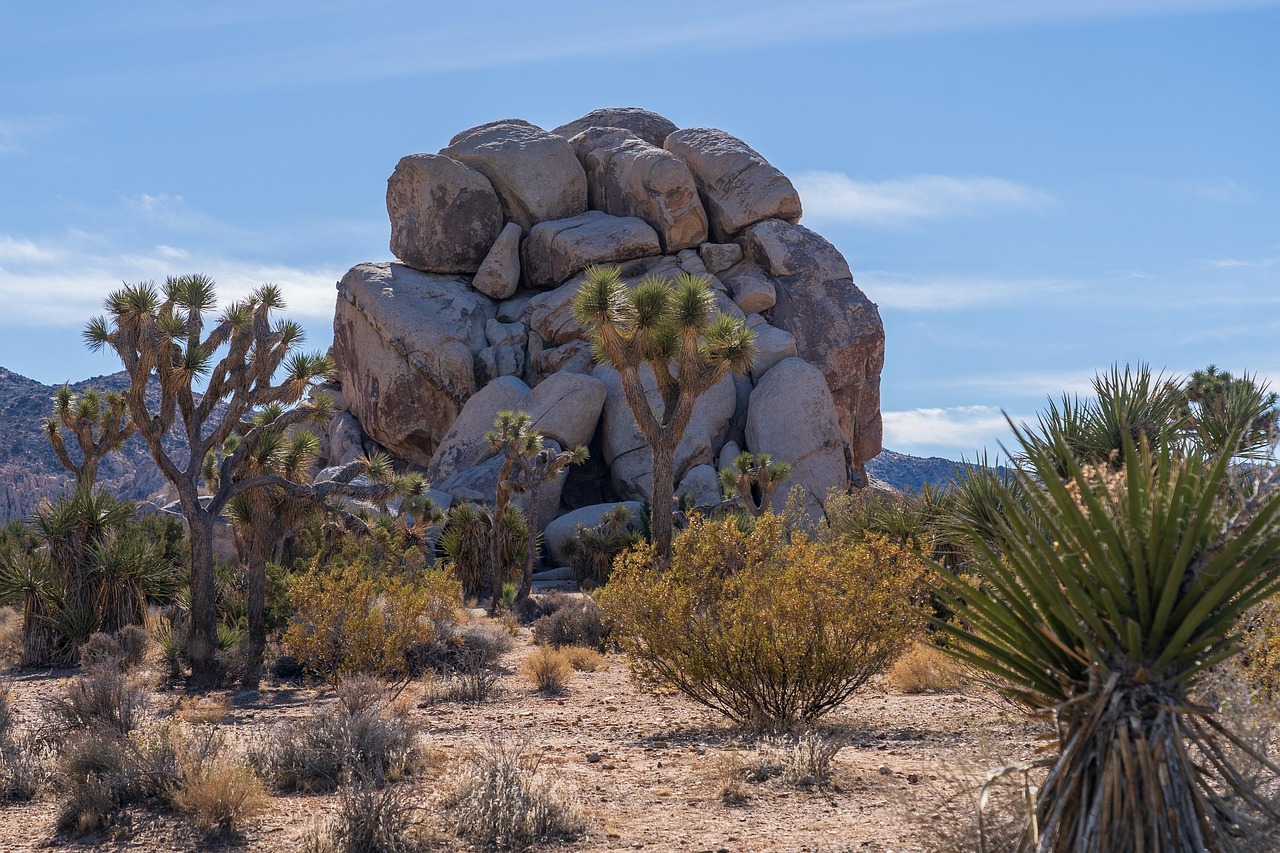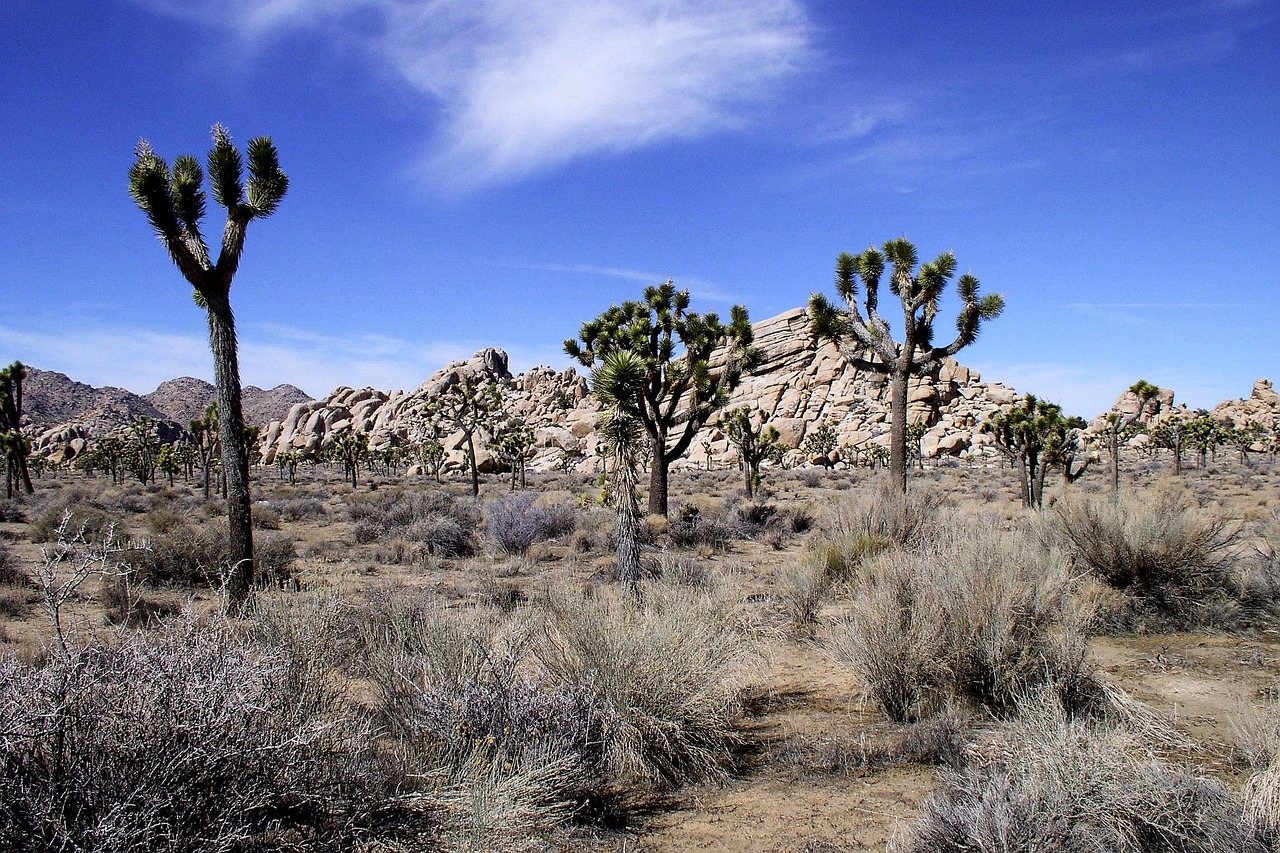The growth rate of Joshua trees in desert landscapes typically ranges from 1 to 3 inches per year, depending on environmental conditions such as soil quality, water availability, and temperature variations.
Joshua trees (Yucca brevifolia) are iconic plants native to the Mojave Desert in California. They thrive in arid environments and are part of the agave family. These unique trees are known for their striking appearance, with tall, branching stalks and spiky leaves. Their growth rate is influenced by a variety of factors that are essential for their survival in harsh desert climates.

Understanding the growth rate of Joshua trees is crucial for conservation efforts and landscape management. As climate change impacts desert ecosystems, monitoring their growth can provide insight into the health of these environments. Although they can live for several decades, their slow growth complicates restoration projects when populations decline.
Factors Affecting Joshua Tree Growth
Several factors influence how fast Joshua trees grow. These factors include soil composition, water availability, sunlight exposure, and temperature. Each of these elements plays a significant role in the overall health and growth of these trees.
- Soil Quality: Joshua trees prefer well-drained sandy soils that provide adequate nutrients. Poor soil conditions can hinder growth.
- Water Availability: These trees are adapted to survive with minimal water. However, prolonged drought can significantly slow their growth.
- Sunlight Exposure: Full sun is essential for optimal growth. Insufficient sunlight can lead to stunted development.
- Temperature Variations: Joshua trees thrive in temperatures between 70°F and 100°F. Extreme cold or heat can impact their growth rates.
The growth rate of Joshua trees varies across different stages of their life cycle. Young seedlings grow at a slower pace compared to established trees. This slow growth is a natural adaptation to their environment, allowing them to conserve resources during challenging conditions.

Growth Stages of Joshua Trees
Joshua trees go through several distinct growth stages, each characterized by specific growth rates and needs. Understanding these stages provides insight into their overall lifecycle. The key stages include:
- Seedling Stage: In this initial stage, Joshua trees grow very slowly, often only a few inches per year. This period can last up to several years before they establish a stronger root system.
- Young Tree Stage: After establishing roots, young trees begin to grow more rapidly, reaching heights of 3-5 feet within a few years, provided conditions are favorable.
- Mature Tree Stage: Mature Joshua trees can reach heights of 15-40 feet, but their growth rate slows down significantly during this stage. They may take decades to reach their maximum height.
The longevity of Joshua trees is impressive, with some individuals living for over 150 years. However, their slow growth means that populations can take a long time to recover after disturbances such as fire or climate change impacts.
The relationship between growth rate and environmental conditions is complex. For example, during rainy seasons, Joshua trees may experience bursts of growth due to increased water availability. Conversely, during droughts, their growth can slow dramatically as they conserve resources.

The Role of Pollinators
Interestingly, pollinators also play a role in the reproductive success and subsequent growth of Joshua trees. The Joshua tree’s flowers are specifically adapted to attract certain species of moths, which are essential for pollination. Successful pollination leads to the production of seeds, which can then germinate into new seedlings and contribute to population growth.
In summary, the growth rate of Joshua trees is influenced by various environmental factors and life stages. Understanding these dynamics helps in conservation efforts and in maintaining the health of desert landscapes where these iconic trees thrive.
Impact of Climate Change on Joshua Trees
Climate change poses significant challenges for the growth and survival of Joshua trees. Changes in temperature, precipitation patterns, and extreme weather events can alter their natural habitat. Understanding these impacts is crucial for their conservation.
Rising temperatures are one of the most concerning aspects of climate change. Joshua trees are adapted to thrive in specific temperature ranges. As temperatures increase, they may face heat stress, which can impede their growth rates. Higher temperatures can also lead to increased evaporation rates, reducing soil moisture levels.

Changes in precipitation patterns can greatly affect the health of Joshua trees. While they are drought-resistant, they still require periodic rainfall to thrive. An increase in extreme weather events, such as prolonged droughts or intense storms, can disrupt their growth cycles. For instance, too much rain can cause root rot, while too little can stunt growth.
Adaptation Strategies of Joshua Trees
Joshua trees have developed several adaptation strategies to cope with their harsh environment and changing climate. These strategies include:
- Deep Root Systems: Joshua trees have extensive root systems that allow them to access water deep in the soil. This adaptation helps them survive during dry periods.
- Water Storage: The trees can store water in their trunks and leaves, enabling them to endure extended periods without rainfall.
- Efficient Photosynthesis: Joshua trees utilize a form of photosynthesis known as CAM (Crassulacean Acid Metabolism), which allows them to minimize water loss during the hottest parts of the day.
Despite these adaptations, the pace of climate change may outstrip their ability to adjust. Monitoring their health and growth in response to changing conditions is critical for their future.
Ecological Importance of Joshua Trees
Joshua trees play a vital role in their desert ecosystems. They provide habitat and resources for various wildlife species. Understanding their ecological significance helps emphasize the need for conservation efforts.
Several species rely on Joshua trees for food and shelter. Some of these include:
- Bird Species: Many birds, such as the endangered California desert tortoise and various songbirds, use Joshua trees for nesting and as a food source.
- Mammals: Animals like jackrabbits and desert squirrels find refuge among the branches and utilize fallen seeds as a food source.
- Insects: Pollinators, such as the yucca moth, are crucial for the reproduction of Joshua trees. They help facilitate pollination by transferring pollen from flower to flower.
The presence of Joshua trees enhances biodiversity in desert landscapes. Their unique structure creates microhabitats that support various plant and animal species, contributing to the overall health of the ecosystem.
Human Impact on Joshua Tree Growth
Human activities also significantly impact the growth and health of Joshua trees. Urban development, land use changes, and climate change driven by human actions pose threats to their populations. Key areas of concern include:
- Urban Development: Expansion of cities and towns increases habitat fragmentation. This limits the available area for Joshua trees to grow and reproduce.
- Agricultural Practices: Farming activities can lead to soil degradation and increased water consumption, further stressing local ecosystems.
- Climate Change Contributions: Human-caused emissions contribute to global warming, exacerbating the temperature and precipitation issues outlined earlier.
Efforts to mitigate these impacts are essential for preserving Joshua tree populations. Strategies such as habitat protection, restoration projects, and sustainable land management practices can help support their growth in changing environments.
Conservation Efforts for Joshua Trees
As awareness grows about the importance of protecting Joshua trees, various conservation initiatives have been launched. These initiatives aim to safeguard their habitats and promote sustainable management practices.
Some notable conservation efforts include:
- Protected Areas: Establishing national parks and reserves helps preserve native habitats and protects Joshua tree populations from urban development.
- Research Programs: Scientists conduct studies on the growth rates and ecological roles of Joshua trees to inform management decisions.
- Public Awareness Campaigns: Educational initiatives raise awareness about the importance of conservation efforts and encourage community involvement.
The success of these initiatives depends on collaborative efforts among government agencies, non-profit organizations, and local communities. By working together, stakeholders can ensure that Joshua trees continue to thrive in their natural desert landscapes.
Growth Rate Variability Across Regions
The growth rate of Joshua trees can vary significantly depending on their specific location within the desert landscape. Different regions may present unique climatic conditions, soil types, and local ecosystems that affect their growth. Understanding these regional differences is vital for effective conservation strategies.
Geographical Influences on Growth
Joshua trees are primarily found in the Mojave Desert, but they can also be located in adjacent desert areas. The geographical variations lead to differences in growth rates based on the following factors:
- Elevation: Joshua trees at higher elevations tend to grow slower due to cooler temperatures and shorter growing seasons.
- Soil Type: The mineral content and drainage properties of the soil can influence nutrient availability and water retention, impacting growth rates.
- Microclimates: Localized weather patterns, such as shade from surrounding vegetation or wind exposure, can create microclimates that either enhance or inhibit growth.
These geographical influences highlight the need for region-specific research and conservation efforts to ensure Joshua trees are thriving in their respective habitats.
Reproductive Strategies and Their Impact on Growth
Joshua trees have unique reproductive strategies that affect their population dynamics and growth rates. Their sexual reproduction relies heavily on specific pollinators, particularly yucca moths. Understanding this relationship is essential for grasping how reproductive success influences growth rates.
Pollination Process
The pollination process involves a mutualistic relationship between Joshua trees and yucca moths. Here’s how it works:
- Flowering: Joshua trees produce large clusters of white flowers that bloom in the spring.
- Moth Attraction: The scent of the flowers attracts yucca moths, which are specialized pollinators for these plants.
- Pollen Transfer: As the moths collect pollen to feed their larvae, they inadvertently transfer pollen from flower to flower, facilitating fertilization.
- Seed Development: After successful pollination, seeds develop within the fruit of the flowers, which can then disperse and germinate under favorable conditions.
This intricate relationship is crucial for the growth of new Joshua trees. A decline in yucca moth populations due to environmental changes or habitat loss could severely impact Joshua tree reproduction and, consequently, their growth rates.
Seed Germination and Seedling Growth
The success of seed germination is another critical factor influencing the growth rate of Joshua trees. Several factors play a role in this process:
- Soil Conditions: Proper soil moisture and temperature are essential for seed germination. Seeds require a specific moisture level to initiate the germination process.
- Competition: Newly germinated seedlings face competition from other plants for sunlight, water, and nutrients. High competition can stunt their growth.
- Environmental Stressors: Factors such as drought, extreme temperatures, and pests can affect seedling survival and growth rates.
The seedling stage is particularly vulnerable. Successful establishment during this phase is critical for maintaining healthy Joshua tree populations in the wild.
The Role of Fire in Joshua Tree Growth
Fire plays a complex role in desert ecosystems, including those where Joshua trees thrive. While fire can be destructive, it can also create opportunities for growth under certain conditions. Understanding this duality is important for managing Joshua tree habitats.
Fire as a Natural Disturbance
Fire is a natural occurrence in many ecosystems. In the context of Joshua trees, fire can have both negative and positive impacts:
- Negative Impacts: High-intensity fires can destroy adult Joshua trees, especially if they occur during dry periods. Older trees may not recover from severe burns.
- Positive Impacts: Low-intensity fires can clear out underbrush and create space for new seedlings to grow. This can enhance nutrient availability in the soil.
The frequency and intensity of fires have been changing due to climate change and human activities. Understanding how these factors influence fire behavior is essential for effective management and conservation of Joshua tree habitats.
Future Research Directions
As we learn more about the growth rates and ecological importance of Joshua trees, future research will be vital in addressing challenges they face. Some potential areas for further study include:
- Climate Impact Studies: Investigating how changing climate patterns affect growth rates and reproductive success over time.
- Genetic Research: Examining genetic diversity within Joshua tree populations to understand their resilience to environmental stressors.
- Ecosystem Interactions: Analyzing how interactions with other species, including pollinators and competitors, influence growth dynamics.
This ongoing research will provide valuable insights necessary for developing effective conservation strategies that ensure the survival of Joshua trees in desert landscapes.
Implications of Conservation Efforts
The ongoing conservation efforts for Joshua trees are essential not only for their survival but also for the preservation of the entire desert ecosystem. By focusing on effective management strategies, we can ensure that these iconic trees continue to thrive in their natural habitats.
One significant implication of successful conservation efforts is the enhancement of biodiversity. As Joshua trees provide habitat for various species, their protection supports the entire food web in arid regions. This interconnectedness highlights the importance of preserving not just individual species but the ecosystems they inhabit.
Community Involvement in Conservation
Community involvement is crucial for the success of conservation initiatives. Local residents, volunteers, and organizations play a vital role in the protection and restoration of Joshua tree habitats. Engaging the community can lead to:
- Increased Awareness: Educating the public about the importance of Joshua trees fosters a sense of stewardship and encourages environmentally friendly practices.
- Active Participation: Community-driven projects, such as tree planting and habitat restoration, can enhance local ecosystems while building community spirit.
- Funding Opportunities: Local and regional initiatives can attract funding from grants and partnerships with non-profit organizations focused on conservation.
By fostering a collaborative approach, communities can become powerful allies in the fight to protect Joshua trees and their ecosystems.
Policy and Legislation
Effective policy and legislation are also critical to safeguarding Joshua tree populations. Governments at various levels can implement policies that support sustainable land use and conservation practices. Some potential areas for policy focus include:
- Land Use Regulations: Establishing guidelines that limit development in sensitive areas can help protect Joshua tree habitats from encroachment.
- Water Management Policies: Implementing sustainable water use practices can ensure that water resources are available for both human needs and natural ecosystems.
- Wildfire Management Strategies: Developing strategies to manage fire risks can help mitigate the impacts of wildfires on Joshua tree populations.
Strong policies can create a framework for long-term conservation success, ensuring that Joshua trees and their ecosystems are protected for future generations.
Final Thoughts
The growth rate of Joshua trees in desert landscapes is influenced by numerous factors, including environmental conditions, climate change, and human impacts. Understanding these dynamics is vital for promoting their survival and health within their natural habitats. As we face increasing challenges from climate change and habitat loss, it is imperative to continue researching and implementing effective conservation strategies.
By recognizing the ecological importance of Joshua trees and actively participating in conservation efforts, we can help safeguard these unique plants and the diverse ecosystems they support. Community involvement, sound policies, and ongoing research will play a pivotal role in shaping a sustainable future for Joshua trees in their desert landscapes.
As we move forward, fostering a deeper appreciation for these iconic trees will not only benefit their populations but also enhance our understanding of desert ecology as a whole. The survival of Joshua trees is intertwined with our commitment to preserving the delicate balance of life in the desert, making it essential to prioritize their conservation in both policy and practice.
